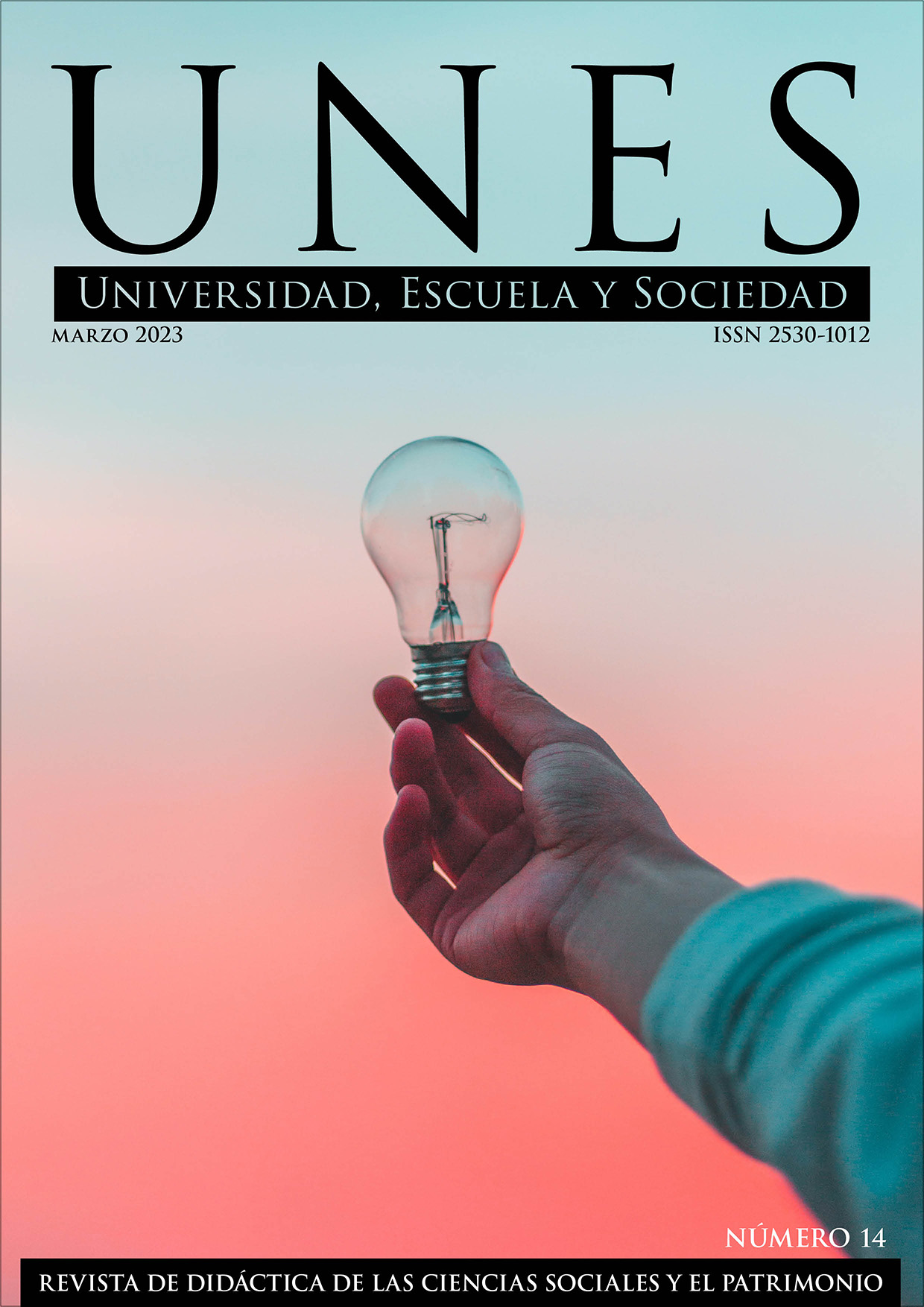Aprender en Kambay: una experiencia de diálogo intercultural en la educación superior
DOI:
https://doi.org/10.30827/unes.i14.27267Palabras clave:
Interculturalidad, Educación Superior, Interdisciplinariedad, Pueblos IndígenasResumen
Con la finalidad de responder a la invitación formulada en ocasión de las Jornadas de Didáctica de las Ciencias Sociales organizadas por las universidades de Villarrica del Espíritu Santo (UNVES, de Villarrica, Paraguay) y de Granada (UGR, de Granada, España), presentamos la primera sistematización del trabajo de investigación comunitaria realizada en el marco de la Licenciatura en Ciencias de la Educación de la Facultad de Filosofía y Ciencias Humanas de la UNVES, con estudiantes del cuarto año de la carrera. Esta investigación tuvo lugar en la comunidad indígena de Kambay, situada a 143 km de Villarrica. Es de población Mby’a, uno de los 20 pueblos indígenas del Paraguay. Como tantos grupos, Kambay es el resultado de la pérdida progresiva de territorio, y de migraciones y desplazamientos resultantes de esta pérdida. En una extensión de 87 hectáreas, la comunidad se ve en la necesidad de desarrollar nuevas estrategias y pautas de vida, a la vez que preserva otras pautas antiguas. Si bien la investigación tuvo originalmente por objetivo el conocimiento y la identificación de las condiciones materiales de vida de la comunidad, y otros aspectos como el apoyo o no de los poderes públicos, el abordaje y los diálogos realizados con referentes de la misma generó también cambios en la perspectiva de los estudiantes participantes acerca de los pueblos indígenas en general, y de la comunidad, en particular, respecto de elementos centrales de su cultura, reivindicando la necesidad de que el enfoque intercultural sea una premisa esencial de este tipo de abordajes.
Descargas
Citas
Alfonzo, Y., Yackow, A., & Denis, M. (2021). Acceso a la educación superior en las comunidades indígenas. Los Maká de Encarnación (Itapúa, Paraguay). TSN, 143-147.
Amarilla, D. (2021). Diversidad cultural e interculturalidad indígena en el Paraguay: una de las dimensiones de la Ciudad MIL. Word in Sciencie, 73-80.
CN. (1992). Constitución Nacional. Asunción: Congreso Nacional.
Guerrero, P. (2019). La interculturalidad sólo será posible desde la insurgencia de la ternura. Interculturalidad Revista Digital RECIM, 1, 56.
INDI. (2021). Plan Nacional de los Pueblos Indígenas. Asunción.
Ley3231. (2007). Ley N° 3231 | Crea la Dirección General de Educación Escolar Indígena. Asunción: Congreso Nacional.
Ley4251. (2010). Ley de Lenguas. Asunción: Congreso Nacional.
Ley5469. (2015). Ley 5469/215 De la Salud de los Pueblos Indígenas. Asunción: Congreso Nacional.
Ley904. (1981). Estatuto de Comunidades Indígenas. Asunción.
Mendoza, C. A. (2012). Movimiento Regional Por la Tierra. Obtenido de Por la Tierra.org: https://porlatierra.org/casos/79
OIT. (1989). Convenio N° 169 sobre pueblos indígenas y tribales en países independientes. Ginebra.
Ramírez, C. (2017). Autonomía Indígena. Diversidad y democracia. Suplemento Antropológico, 49.
Rojas, G. (2012). Los pueblos guaraníes en Praguay: Una aproximación socio-histórica a los efectos del desarrollo dependiente. Obtenido de Consejo Latinoamericano de Ciencias Sociales (CLACSO): "http://biblioteca.clacso.edu.ar/Paraguay/ceepg/20170404052226/pdf_1026.pdf"
Zanardini, J. (2019). Cultura de la Selva. Interculturalidad Revista Digital RECIM, 1, 99-190.
Zuiderwyk, E., Czeraniuk, N., & Canton, F. (2020). Comunidades Mbya y Maká en Itapúa. Divesper.
Descargas
Publicado
Cómo citar
Número
Sección
Licencia
Derechos de autor 2023 María Raquel Girala Codas, Stella Marisel Leiva Peralta

Esta obra está bajo una licencia internacional Creative Commons Atribución-NoComercial-CompartirIgual 4.0.
Los autores que publican en esta revista están de acuerdo con los siguientes términos:
Los autores conservan los derechos de autor y garantizan a la revista el derecho de ser la primera publicación del trabajo al igual que licenciado bajo una licencia de Creative Commons Reconocimiento-NoComercial-CompartirIgual 4.0 Internacional que permite a otros compartir el trabajo con un reconocimiento de la autoría del trabajo y la publicación inicial en esta revista.
Los autores pueden establecer por separado acuerdos adicionales para la distribución no exclusiva de la versión de la obra publicada en la revista (por ejemplo, situarlo en un repositorio institucional o publicarlo en un libro), con un reconocimiento de su publicación inicial en esta revista.
Se permite y se anima a los autores a difundir sus trabajos electrónicamente (por ejemplo, en repositorios institucionales o en su propio sitio web) antes y durante el proceso de envío, ya que puede dar lugar a intercambios productivos, así como a una citación más temprana y mayor de los trabajos publicados (Véase The Effect of Open Access) (en inglés).
Los autores han respetado la política de autoría de esta revista






 ISSN-e: 2530-1012
ISSN-e: 2530-1012









